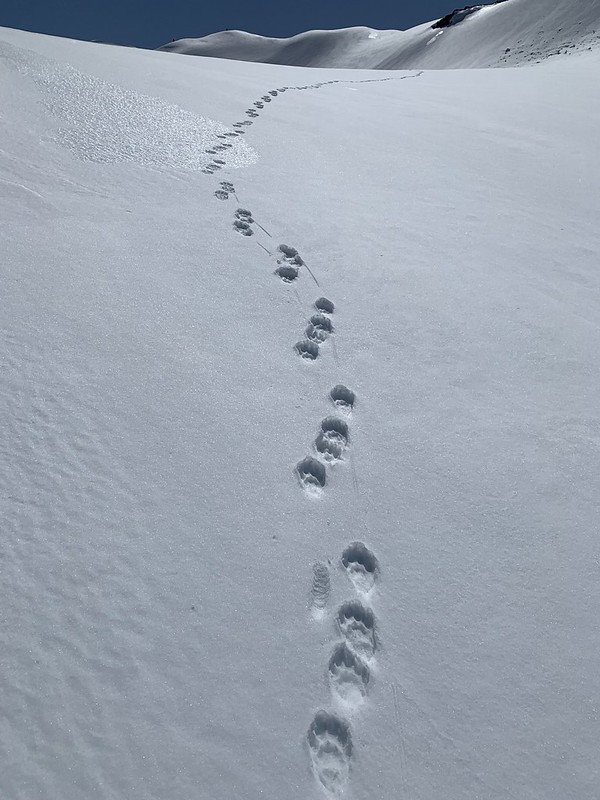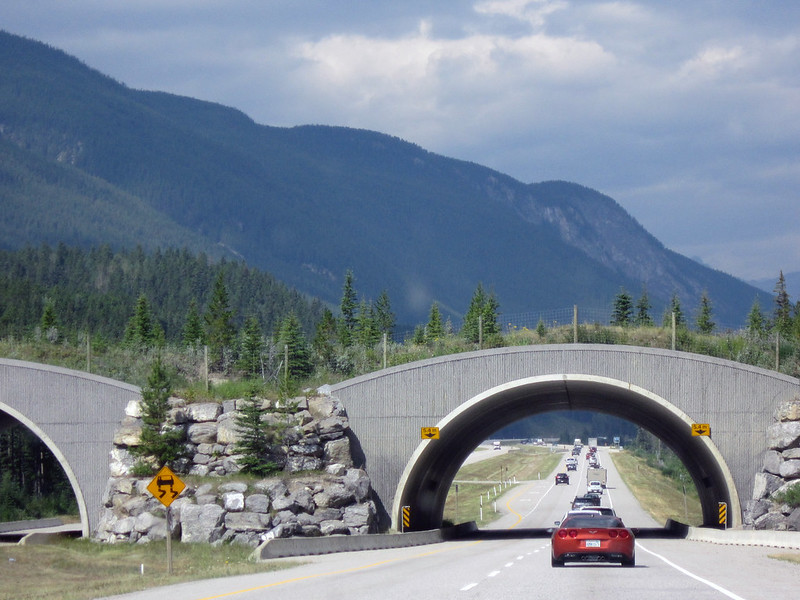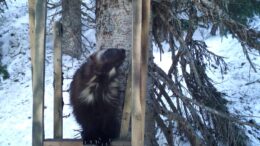Wolverines are notoriously elusive, which has made them hard to study. And harder to protect.
Often dwelling in high mountain reaches and denning in deep snow, wolverines (Gulo gulo) prefer to stay away from people. Although evidence has long suggested their populations have declined, some scientists and policymakers have, for years, fallen back on a common trope that not enough is known about them to warrant protective action.
But a new study published in Global Ecology and Conservation flips this narrative — and renews the call for conservation.
“It turns out we actually know a lot more than we thought we did about this creature,” says Aerin Jacob, a conservation scientist at the Yellowstone to Yukon Conservation Initiative.
Jacob and a team of 15 other researchers surveyed the scientific literature and found 156 peer-reviewed studies about wolverines published in English — mostly from North America and Scandinavia — in the past 20 years.
“We can’t just keep hiding behind the idea that wolverines are hard to study and so we’re going to ignore them,” says lead author Jason Fisher, a wildlife ecologist at the University of Victoria. “I think the big take-home from the study is that we do know a lot about what’s affecting them. We can do something about this now, so let’s get to it.”
The Threats
The review of wolverine research found a troubling trend.
“By and large we’re finding that wolverine populations are declining in some part of their range all over the world,” says Jacob. The species lives in many parts of the global North, including Russia and Mongolia.
Broadly speaking, the biggest threats come from people — specifically landscape changes and climate change, although there are some geographic differences. In places like British Columbia and Scandinavia, hunting and trapping of wolverines are also big threats.
In other parts of Canada, including Alberta, landscape changes are the key factor.
“The places that used to be pretty far tucked away are now being very heavily developed for oil and gas, forestry, and recreation,” says Fisher. “And it’s those incursions that are taking a big toll on wolverines.”
Across Canada’s southern border, things are even more dire. Wolverines used to range across large parts of the United States, from coast to coast and as far south as New Mexico. But European colonization has pushed wolverines into just the upper Rocky and Cascade mountains. Only 300 or so of the animals remain in the lower 48 states.
There, ample snow, especially in the spring when females are denning, seems to be an important factor in wolverine survival.

“The populations left behind now most definitely need those mountain strongholds and need snow,” says Fisher. “If not for snow itself, then at least for the things that snow represents, whether that’s dens for kits or it’s places where other species can’t live.”
Recent research shows that wolverines face a lot of competition, but they can outcompete other predators, such as coyotes, in deep snow because they’re especially adapted to it, including having “monstrous, snowshoe paws,” he says.
A reduced snowpack from climate change poses an additional threat for the remaining populations.
So too does more people getting out into the backcountry, such as skiers accessing mountain areas by helicopter and snowcat.
“Even though wolverines can fight off bigger carnivores — including grizzlies — from a kill, the research also shows they’re incredibly sensitive to human activities,” says Jacob. “That can be something we think of as insignificant, like recreation in the wrong places at the wrong times. Or it can be landscape-scale change that you can really see. All of these things add up to affect a species that’s really sensitive to people.”
Scaling Solutions
In recent years wolverines have benefitted from a few conservation programs at the regional level.
In Scandinavia, Indigenous Sámi have traditionally hunted and trapped wolverines to reduce their numbers and protect reindeer herds they rely on for their livelihoods. Sweden has implemented a program to compensate Sámi for not killing wolverines that’s shown success, says Fisher.
“In British Columbia there’s been extensive work that shows that wolverines are overharvested — they have the most liberal harvest on the planet,” he says. “But they have made some regional changes to their harvest policy to decrease that pressure.”
In other parts of the province, researchers have identified areas where female wolverines are denning and posted notices informing recreationists to avoid those areas.
“Most people do it, even though it’s voluntary,” says Jacob. “But it’s important because it’s a critical time for a species that’s slow to reproduce and doesn’t have many babies.”
In Alberta dozens of overpasses and underpasses, along with corresponding roadside fencing, are helping wolverines and other animals safely cross busy highways around Banff National Park. Speeding cars, of course, pose a safety risk, but research has also found that female wolverines often won’t cross busy roads, and that poses a risk to the animal’s genetic diversity.

More wildlife crossing structures are needed along busy stretches of road, but we need to prevent more roads from being built in areas where we don’t have them, says Jacob.
“A male wolverine might have a territory of 380 square miles or more in some cases. And he will not share that with other male wolverines,” she says. “This is what makes wolverines unlike many other species.”
Wolverines need a lot of area to move — and those areas need to be connected.
“What this research tells us is that we have to be thinking about landscapes at really big scales,” says Jacob. “And unless we do that, wildlife, like wolverines, aren’t going to thrive.”
Next Steps
What’s needed next is a better-informed public and more action from decision-makers, say the researchers.
“Animals like caribou and grizzly get more attention — at least here in Canada,” says Fisher. “So we’re really hoping that some changes come really soon, before it’s too late for wolverines.”
Specifically he hopes that the research they’ve compiled can help drive support for reassessing wolverine populations and what’s needed to help them.
In Canada wolverines are listed as “special concern,” the lowest category for a species at risk of extinction. There’s no federal management plan for them, and in British Columbia, Jacob says, their provincial management plan hasn’t been updated in more than 30 years. In Alberta wolverines are designated as “data deficient,” which should also be reassessed in light of recent research, she says.
And in the United States, conservation groups are fighting a 2020 decision by the Fish and Wildlife Service to deny listing wolverines as threatened under the Endangered Species Act.
“What we’re really hoping is by producing this paper and getting this consensus opinion, that’ll drive governments to take a much closer look,” says Fisher. “Hopefully the United States will reconsider the endangered species listing, and Canada and individual jurisdictions will reassess wolverines and take some stronger conservation action because right now they’re really falling through the cracks.”
![]()
Previously in The Revelator:
Road to Nowhere: Highways Pose Existential Threat to Wolverines


